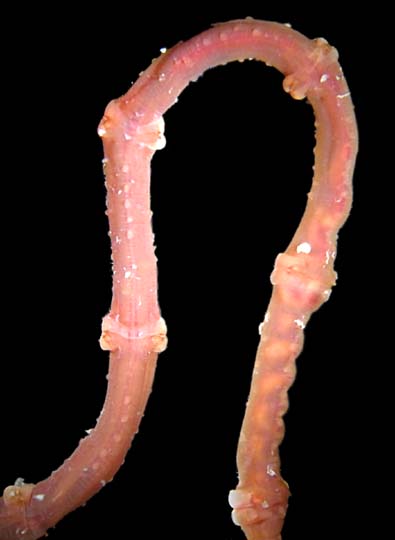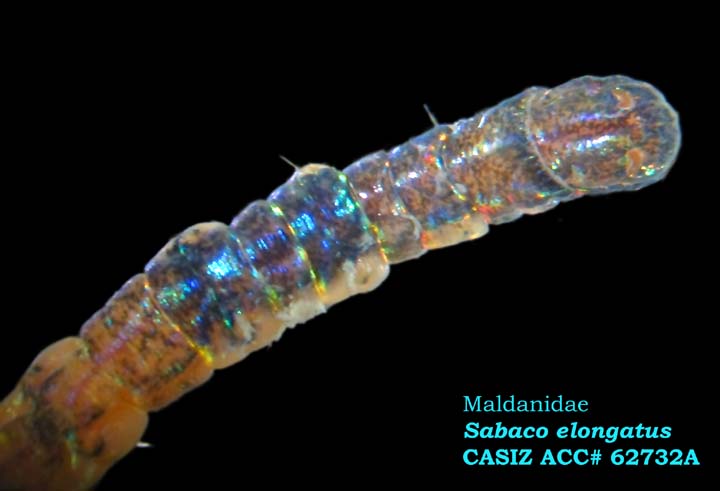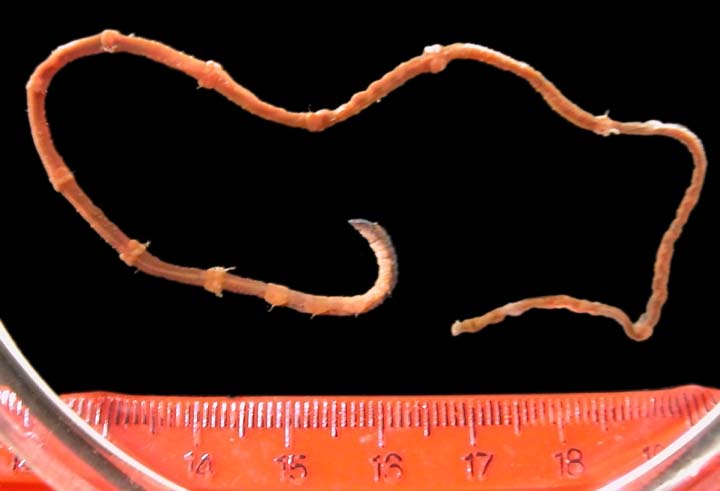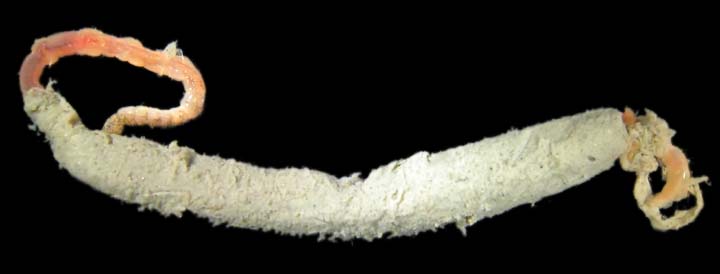Sabaco elongatus (Verrill, 1873)
Sabaco elongatus is a polychaete in the family Maldanidae, and is often referred to as a "bamboo worm" due to its jointed appearance. Many segments of a maldanid worm's body contain neuropodial tori (or ridges which contain small setae) at their ends, which bring the image of a bamboo shoot to mind.
This particular species was introduced from the western Atlantic (eastern U.S.), either as an accidental introduction by the oyster industry or through means of ballast water exchange. It has now become the dominant maldanid worm in the Bay, and occurs very commonly in benthic (bottom) sediment (especially in silty or sandy mud and at depths between 3-6 meters), where it lives in thick, mud-walled tubes. We have collected numerous maldanid worms and their tubes from the south Bay and from the Oakland/Alameda area, where it has been estimated that these worms can occur in densities of from between 1,000 to 5,000 individuals per square meter (Cohen and Carlton 1995).
Mature specimens of S. elongatus are usually relatively large (from 6 cm to sometimes over 20 cm in length) and are dark pink in color. The worms often have an iridescent sheen and dark pigmentation on their laterally-pointed heads (which makes the species easily recognizable) and a distinctly trumpet-shaped pygidium (posterior end). Notice the pigmentation in the second and third photos from the top, which show different views of the animal's anterior (head).

median body segments, featuring neuropodial tori

dorsal anterior

lateral anterior

entire specimen

worm with section of tube
